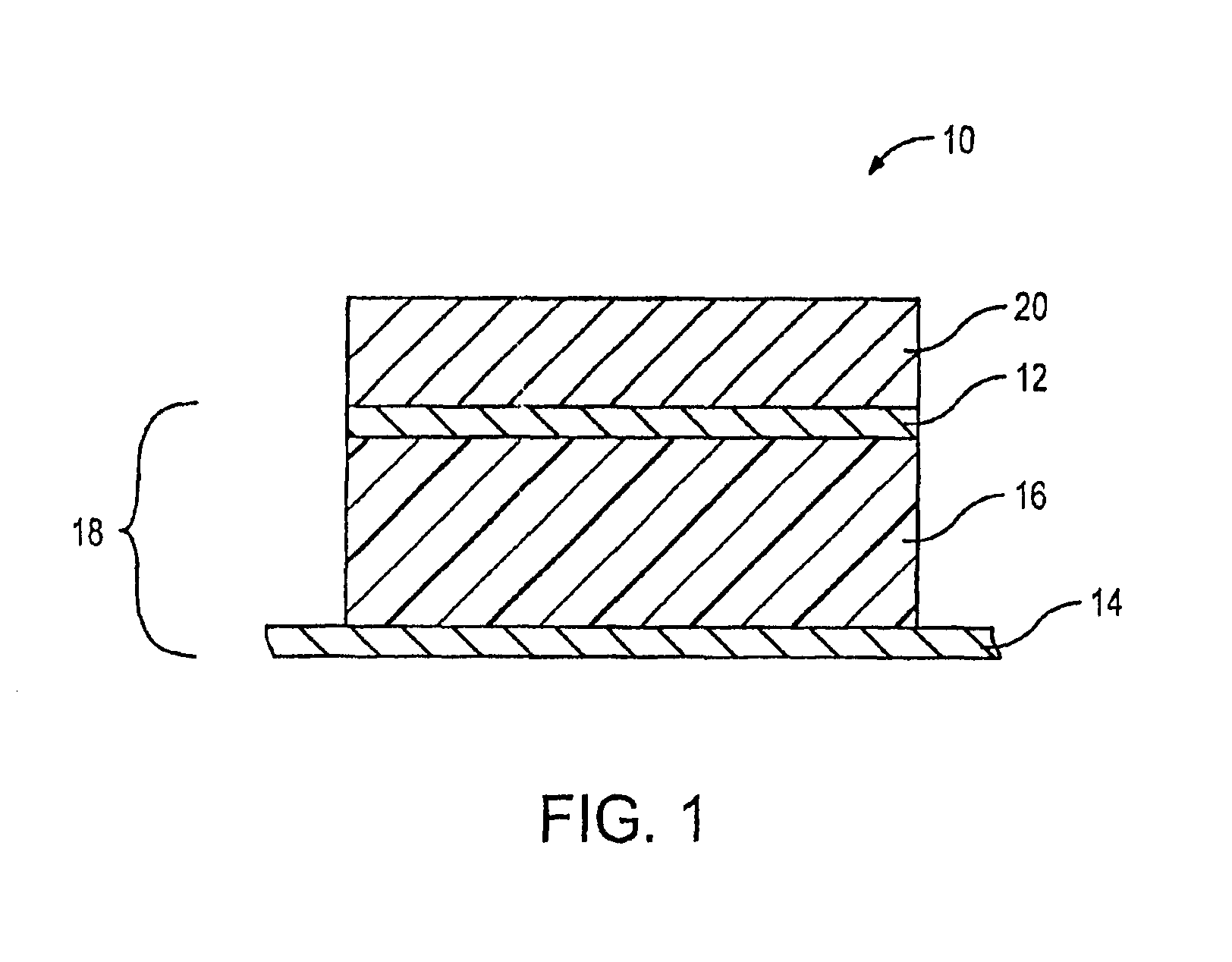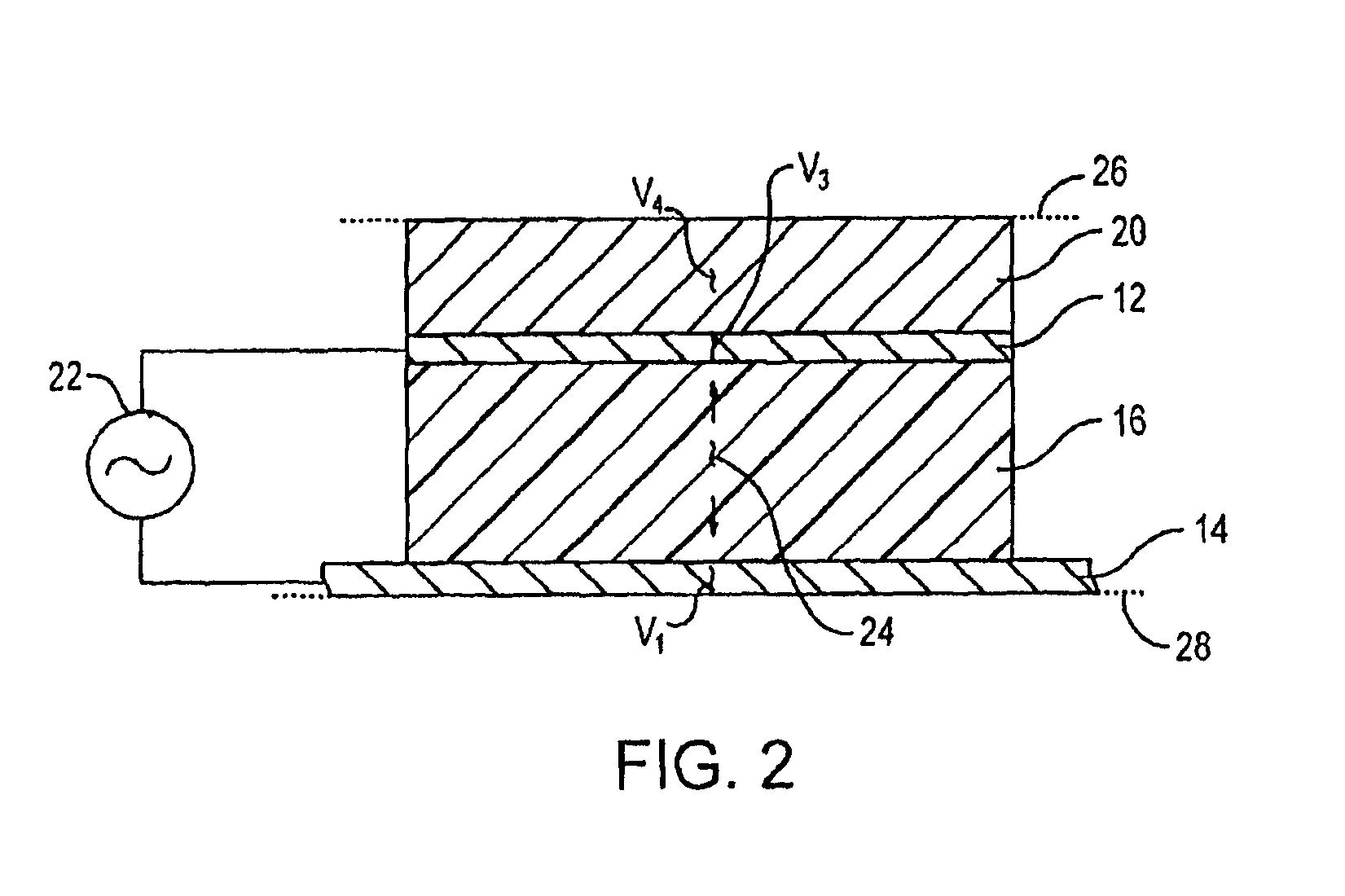Method of making an acoustic wave resonator
a resonator and acoustic wave technology, applied in the field of acoustic resonators, can solve the problems of large electrical losses at microwave frequencies of ferromagnetic materials, and achieve the effect of not significantly affecting the electrical resistance of electrodes
- Summary
- Abstract
- Description
- Claims
- Application Information
AI Technical Summary
Benefits of technology
Problems solved by technology
Method used
Image
Examples
Embodiment Construction
Referring to FIG. 1, an exemplary embodiment of an acoustic resonator 10 includes a pair of opposed electrodes 12 and 14. Between the opposed electrodes 12 and 14 is a piezoelectric body 16, forming an electrode-piezoelectric stack 18. The stack 18 is typically referred to as a thin film bulk acoustic resonator (FBAR).
Disposed adjacent to the stack 18 is a compensator body 20 that facilitates stabilization of the resonant frequency of the acoustic resonator 10 when subjected to temperature variations. This is achieved by forming the compensator body 20 from one or more materials having a positive temperature coefficient of frequency. The positive temperature coefficient of frequency compensates for the negative temperature coefficient of frequency of the materials from which the electrode-piezoelectric stack 18 is formed.
Typically, the piezoelectric body 18 is formed from any piezoelectric material that provides a reasonably high electromechanical coupling constant and low dielectri...
PUM
| Property | Measurement | Unit |
|---|---|---|
| Fraction | aaaaa | aaaaa |
| Fraction | aaaaa | aaaaa |
| Temperature | aaaaa | aaaaa |
Abstract
Description
Claims
Application Information
 Login to View More
Login to View More - R&D
- Intellectual Property
- Life Sciences
- Materials
- Tech Scout
- Unparalleled Data Quality
- Higher Quality Content
- 60% Fewer Hallucinations
Browse by: Latest US Patents, China's latest patents, Technical Efficacy Thesaurus, Application Domain, Technology Topic, Popular Technical Reports.
© 2025 PatSnap. All rights reserved.Legal|Privacy policy|Modern Slavery Act Transparency Statement|Sitemap|About US| Contact US: help@patsnap.com



